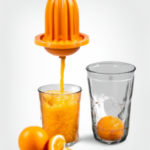Juice Tips and Tricks
How To Juice A Grapefruit Without A Juicer

I recently discovered the many health benefits of grapefruit and decided to incorporate it into my daily routine. However, I wasn’t keen on buying a juicer, so I looked for a way to juice grapefruit without one. After some research, I found a simple method using just a knife and a strainer. I cut the grapefruit in half, squeezed the juice out by hand, and then strained it to remove the pulp. In the process, I also stumbled upon tips on how to juice a pineapple, which I might try next, as I’m eager to experiment with more fresh fruits.
After some trial and error, I found a simple and effective method that allows me to enjoy fresh, homemade grapefruit juice every day.
In this article, I’ll share with you my step-by-step process for juicing grapefruit without a juicer. Whether you’re looking to boost your immune system, improve your digestion, or simply enjoy a refreshing drink, this method will help you make the most of this delicious citrus fruit.
So, let’s get started!
Key Takeaways
- Tools needed for juicing without a juicer include a citrus reamer or hand-held juicer, fine mesh strainer, measuring cup, mixing bowl, and spoon
- Straining the juice is important to remove any pulp or seeds
- Grapefruit juice can be sweetened with natural sweeteners like honey or stevia
- Juicing grapefruit without a juicer is simple and effective
Choose the Right Grapefruit
You’ll wanna pick a grapefruit that’s heavy for its size and feels firm to the touch. This means the fruit is fresh and juicy, perfect for juicing.
When choosing a grapefruit, you should also consider the variety. Pink grapefruits are sweeter and less acidic than white grapefruits, while red grapefruits have the highest levels of antioxidants. Each variety has its own unique flavor and health benefits, so choose the one that best suits your taste and needs.
In addition to being a tasty treat, grapefruits are packed with nutrients. They’re low in calories, high in vitamin C, and contain fiber, potassium, and other essential vitamins and minerals.
Juicing grapefruits is an easy way to incorporate these health benefits into your diet. Now that you’ve chosen the perfect grapefruit, it’s time to gather your tools and start juicing!
Gather Your Tools
Grab a sharp knife and a cutting board to begin preparing your grapefruit for juicing. While a juicer can make the process easier, there are alternative tools and juicing techniques that can still produce a delicious and refreshing juice.
Here are some tools you may want to have on hand before starting:
- Citrus reamer or hand-held juicer
- Fine mesh strainer
- Measuring cup
- Mixing bowl
- Spoon
With these tools, you can easily extract the juice from the grapefruit without the need for a juicer. The citrus reamer or hand-held juicer can help you get the most juice out of the fruit while the fine mesh strainer can remove any pulp or seeds. The measuring cup can be used to measure the amount of juice you have extracted while the mixing bowl can be used to mix different juices or ingredients. Finally, the spoon can be used to scrape out any remaining juice from the fruit.
Now that you’ve gathered your tools, it’s time to cut the grapefruit.
Cut the Grapefruit
Before cutting the fruit, it’s important to wash it thoroughly to remove any dirt or residue.
Once you’ve done that, cut the grapefruit in half, using a sharp knife. Make sure to cut through the middle of the fruit, so that you can easily juice it later on. If you don’t have a sharp knife, consider using a serrated one, which can help you cut through the thick skin of the grapefruit.
Juicing a grapefruit has several benefits, including improving digestion, supporting heart health, and boosting immunity. Grapefruit is also a versatile fruit that can be used in a variety of recipes, from salads to smoothies to cocktails.
By juicing a grapefruit yourself, you can ensure that you’re getting all of its health benefits, without any added sugar or preservatives.
To squeeze the grapefruit, place one half of the fruit on top of a juicing tool, such as a citrus reamer or a fork. Then, press down on the fruit and twist it back and forth, until all of the juice has been extracted.
Repeat this process with the other half of the grapefruit, and enjoy your freshly squeezed juice!
Squeeze the Grapefruit
To get the most out of your grapefruit, use a juicing tool like a citrus reamer or fork to extract all the delicious juice. However, if you don’t have access to a juicer or juicing tool, there are still some hand squeezing techniques you can use to get the most out of your grapefruit.
First, cut the grapefruit in half and use a spoon to loosen the flesh from the skin. Then, using your hands, squeeze the grapefruit over a bowl or pitcher, ensuring that you apply even pressure on the fruit. Another alternative to hand squeezing is to use a fork to pierce the flesh and twist it to release the juice. These methods may require a bit more effort than using a juicer, but they can be just as effective.
Once you have squeezed all the juice out of your grapefruit, it’s time to move on to the next step: straining the juice.
Strain the Juice
Now you’re ready to pour the freshly squeezed grapefruit juice through a fine mesh strainer and watch as the vibrant, citrusy liquid flows through the sieve, leaving behind any pulp or seeds.
Straining techniques are crucial when it comes to juicing grapefruits, as they help to separate the juice from any unwanted bits. A fine mesh strainer is ideal for this task, as it will catch any pulp or seeds that may still be present in the juice. Simply place the strainer over a bowl or pitcher, and pour the juice through it, using a spoon or spatula to press down on the pulp and extract as much juice as possible.
Straining your grapefruit juice not only ensures a smooth and refreshing drink, but it also has numerous health benefits. Grapefruit is a great source of vitamin C, which helps to boost the immune system and protect against illness. It also contains antioxidants that can help to reduce inflammation and lower the risk of chronic diseases.
By removing any pulp or seeds, you’re left with a pure juice that is packed with nutrients and easy for your body to digest. Now that your juice is strained, it’s time to add sweetener (optional) to make it even more enjoyable.
Add Sweetener (Optional)
If you’ve got a sweet tooth, feel free to enhance the flavor of your freshly squeezed grapefruit juice by adding a touch of honey or a pinch of sugar. However, before adding any sweeteners, it’s important to taste the juice first, as grapefruit is already naturally sweet. You don’t want to add too much sweetness and overpower the natural flavor of the fruit.
If you’re looking to create grapefruit cocktails, there are plenty of natural sweeteners you can use instead of refined sugar. Agave nectar, maple syrup, and stevia are all great options that won’t spike your blood sugar levels. Just add a small amount to your freshly squeezed juice and mix well.
Now that your juice is sweetened to your liking, it’s time to move on to the next step of mixing the juice with other ingredients to create delicious grapefruit cocktails.
Mix the Juice
You’re definitely not gonna want to just toss that freshly squeezed goodness down the drain, are you? So grab a cocktail shaker and start mixing up some delicious grapefruit cocktails! Experiment with flavors by adding in different types of alcohol, such as vodka or gin. Mix in some other fruit juices like pineapple or orange. You can also try adding in some herbs like basil or mint for a refreshing twist. Don’t be afraid to get creative and make your own signature grapefruit cocktail.
Another great way to use the leftover pulp is to add it to smoothies or yogurt for an extra boost of fiber and flavor. The pulp can also be used in baking recipes, such as muffins or bread, for a delicious and nutritious twist.
When you’re finished experimenting with flavors and using up the leftover pulp, it’s time to chill the juice. Simply pour it into a glass or pitcher and place it in the fridge for a few hours, or add some ice cubes for a quick chill.
Chill the Juice
To get that perfectly chilled and refreshing grapefruit drink, all you need to do is pop it in the fridge or add some ice cubes- it’s that easy! Chilling your grapefruit juice not only makes it more enjoyable to drink, but it also has some benefits.
Chilled juice is a great way to cool down on a hot day, and it can also help to soothe a sore throat or upset stomach. Additionally, chilled juice can help to preserve the nutrients in the juice, so you can enjoy all of the health benefits that grapefruit has to offer.
If you don’t have access to a fridge or ice cubes, there are alternative ways to chill your grapefruit juice. One option is to wrap your juice container in a wet towel and place it in front of a fan. The evaporating water will help to cool the juice down quickly. Another option is to place your juice container in a bowl of ice water for a few minutes. This will help to chill the juice without diluting it with ice cubes.
Once your grapefruit juice is chilled to your liking, it’s time to serve it up! [Transition into the subsequent section about serving the juice here.]
Serve the Juice
So, now that I’ve successfully juiced my grapefruit without a juicer, it’s time to serve it up!
First, I’ll grab a tall glass and pour in the freshly squeezed juice.
Next, I’ll add a little flair by garnishing the edge of the glass with a small wedge of grapefruit. Not only does it look pretty, but it also adds a little extra flavor to each sip.
Cheers to a refreshing and easy-to-make grapefruit juice!
Pour into a Glass
Now that your grapefruit is juiced, it’s time to pour it into a glass and enjoy the refreshing taste! You can use any type of glass you like, but I recommend using a tall glass to show off the vibrant color of the juice.
There are many creative serving ideas you can try, such as adding some ice cubes or a dash of honey for sweetness. Aside from its delicious taste, grapefruit juice also offers many health benefits. It’s rich in vitamin C and antioxidants, which can boost your immune system and protect your cells from damage.
Additionally, grapefruit juice may help lower cholesterol levels and aid in weight loss. So go ahead and indulge in a glass of grapefruit juice – it’s both tasty and good for you! And don’t forget to garnish with a grapefruit wedge for an extra pop of flavor.
Garnish with a Grapefruit Wedge
You can add a pop of flavor to your grapefruit juice by garnishing it with a wedge of grapefruit. Not only does it add a visual appeal to the drink, but it also enhances the taste. You can cut the grapefruit wedge into different shapes to make it more creative, such as a star or a heart.
Another idea is to sprinkle some sugar on the wedge to balance out the tartness of the juice. If you’re looking for grapefruit wedge alternatives, you can try using a sprig of fresh mint or a slice of cucumber. These options add a refreshing twist to the juice and make it perfect for a hot summer day.
Whatever garnish you choose, make sure it complements the flavor of the juice. With a little creativity, you can turn a simple glass of grapefruit juice into a fancy and delicious drink.
Now that you’ve garnished your grapefruit juice, it’s time to enjoy your homemade creation!
Enjoy Your Homemade Grapefruit Juice!
Savor the taste of your freshly squeezed grapefruit juice and treat yourself to a refreshing and healthy drink! Now that you’ve successfully juiced your grapefruit without a juicer, it’s time to enjoy the fruits of your labor.
But how can you make the most out of your homemade juice? Get creative with your serving ideas! You can serve your grapefruit juice over ice and garnish it with a slice of grapefruit or a sprig of mint. You can also mix it with other juices to create a tasty and unique blend.
For example, try mixing your grapefruit juice with orange juice for a citrusy combination. As for pairing suggestions, grapefruit juice goes well with breakfast foods such as pancakes, waffles, and yogurt. You can also pair it with seafood dishes or use it as a base for marinades.
The possibilities are endless, so go ahead and experiment with different serving ideas and pairings to find your perfect match.
Frequently Asked Questions
How long can the homemade grapefruit juice be stored in the fridge?
I’ve found that homemade grapefruit juice can last up to 5-7 days in the fridge. To extend shelf life, try adding a splash of lemon juice or storing in an airtight container. For variations, experiment with adding herbs like mint or basil.
Can I use a hand-held citrus squeezer instead of squeezing the grapefruit manually?
As the saying goes, "work smarter, not harder."While a hand-held citrus squeezer may be an alternative to manual squeezing, it can be less efficient and potentially messy. Consider the pros and cons before deciding which method to use.
Can I substitute sugar with honey or stevia as a sweetener?
Yes, honey and stevia can be used as substitutes for sugar in grapefruit juice. Honey has antioxidant properties and stevia is a natural sweetener with no calories. Grapefruit juice is a good source of vitamin C and can aid in weight loss.
Are there any variations or additions to the basic grapefruit juice recipe?
Variations and additions to basic grapefruit juice recipe include flavor combinations like adding mint, ginger, or honey, and nutritional boosts like adding chia seeds or turmeric. Experimenting with different ingredients can enhance the taste and health benefits of grapefruit juice.
Is it possible to use frozen grapefruit instead of fresh ones?
I coincidentally discovered that frozen grapefruit works well for juicing. However, frozen grapefruit may have slightly less vitamin C and antioxidants compared to fresh ones. Nonetheless, it is still a nutritious option for juicing.
Conclusion
So there you have it, folks – a simple and easy way to juice a grapefruit without a juicer!
Not only is making your own grapefruit juice a cost-effective and satisfying experience, it’s also a healthy and refreshing way to start your day.
Did you know that one medium-sized grapefruit contains nearly 100% of your daily recommended intake of vitamin C? That’s right – just one grapefruit can provide you with a powerful boost to your immune system while also promoting healthy skin and collagen production.
So why not skip the store-bought juice and make your own delicious and nutritious grapefruit juice at home? With these easy steps, you’ll be sipping on fresh, homemade juice in no time.
Susannah expertise lies in researching and compiling evidence-based content on juicing, nutrition, and overall health. She is committed to ensuring that The Juicery World offers accurate, up-to-date, and trustworthy information to empower readers to take control of their health. Susannah’s goal is to inspire individuals to embrace juicing as a way to nourish their bodies and live their best lives.
Juice Tips and Tricks
How to Make Aloe Vera Juice Taste Better

Tired of the strong flavor of aloe vera juice? No problem, we’ve got the answer for you.
In this article, we’ll share some tips and tricks to make your aloe vera juice taste better. We have tried and tested various methods to enhance the flavor without compromising the health benefits.
From choosing the right juice to adding natural sweeteners and infusing with fruits and herbs, we’ve got all the information you need to transform your aloe vera juice into a delightful and refreshing beverage.
Let’s dive in!
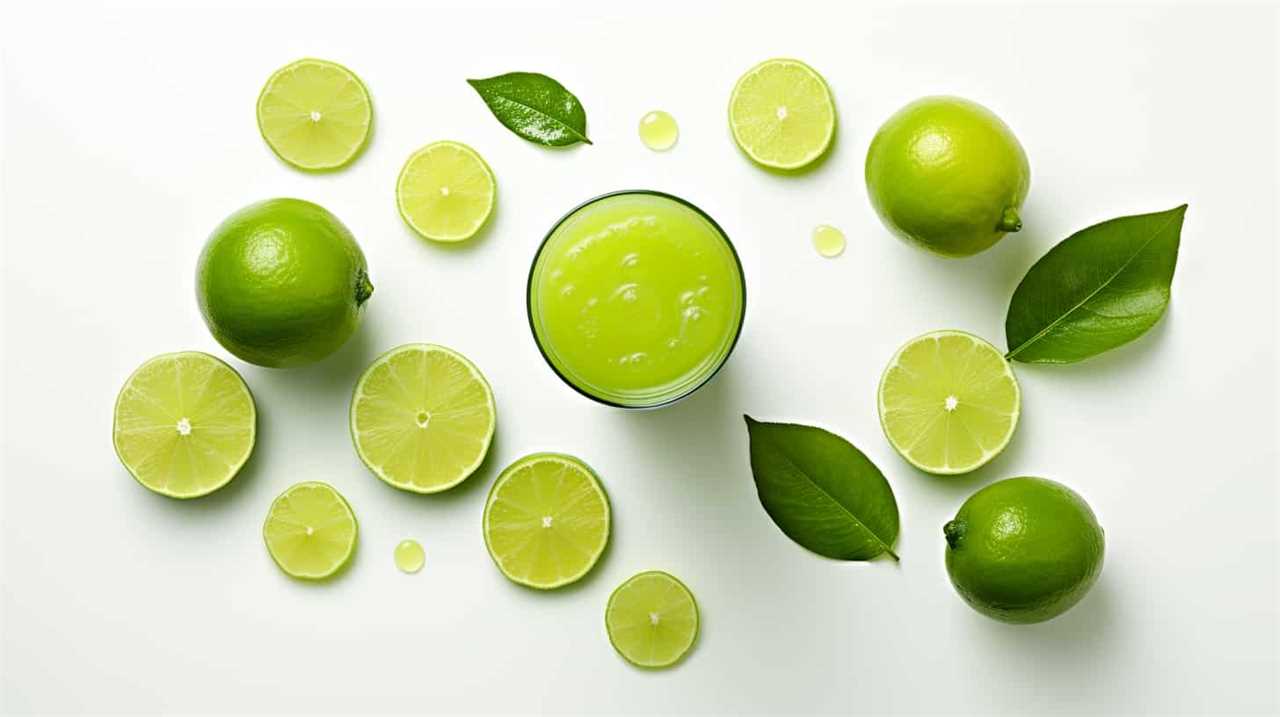
Key Takeaways
- Choose a reputable brand of aloe vera juice that prioritizes quality and uses organic, pure aloe vera.
- Avoid brands that contain added sugars or artificial ingredients.
- Use natural sweeteners like honey, agave syrup, or stevia to enhance the taste of aloe vera juice.
- Experiment with adding fruits, herbs, and other juices to create unique flavor combinations and enhance the health benefits of aloe vera juice.
Choosing the Right Aloe Vera Juice
We can enhance our experience with aloe vera juice by selecting the right brand and type for our preferences. When it comes to finding a reputable brand, it’s important to do some research and read reviews from other consumers. Look for brands that prioritize quality and use organic, pure aloe vera without any added sugars or artificial ingredients. Understanding the health benefits of aloe vera juice is also crucial in making the right choice. Aloe vera is known for its soothing properties, aiding digestion, promoting skin health, and boosting the immune system. By choosing a high-quality brand, we can ensure that we’re getting the maximum benefits from our aloe vera juice.
Now that we know how to choose the right brand, let’s move on to the next step of adding natural sweeteners.
Adding Natural Sweeteners
To enhance the flavor of our aloe vera juice, we can add natural sweeteners such as honey or agave syrup. Using alternative sweeteners not only adds sweetness but also brings unique flavors to the juice. Here are some options to consider:
- Stevia: A natural sweetener derived from the Stevia plant, it’s a zero-calorie alternative to sugar.
- Maple Syrup: This natural sweetener adds a rich and earthy flavor to the aloe vera juice.
- Dates: Pureed dates can be used to sweeten the juice while also providing essential nutrients like fiber.
In addition to using alternative sweeteners, we can enhance the flavor of aloe vera juice by adding spices and extracts. Cinnamon, ginger, or vanilla extract can add warmth and depth to the taste. By experimenting with different combinations of these natural sweeteners, spices, and extracts, we can create a flavor profile that suits our preferences.

Now, let’s move on to the next section and learn how to infuse aloe vera juice with fruits and herbs to further enhance its taste.
Infusing With Fruits and Herbs
As we explore ways to make our aloe vera juice taste better, one option to consider is infusing it with fruits and herbs. Creating unique aloe vera blends by adding fruits and herbs not only enhances the flavor but also adds a touch of freshness and complexity to the juice. For example, combining aloe vera juice with lemon, mint, or berries can create a refreshing drink that’s both delicious and packed with additional nutrients. It’s similar to the ease of making lemonade with bottled juice—quick, convenient, and customizable to suit your preferences. By experimenting with different fruit and herb combinations, you can elevate your aloe vera juice experience while still reaping its health benefits.
Fruits like strawberries, pineapple, or citrus can add a burst of sweetness, while herbs like mint, basil, or ginger can provide a subtle yet refreshing twist. Exploring the benefits of herbal infusions can also be beneficial for our health. For example, adding a few sprigs of lavender can promote relaxation and reduce stress. Additionally, infusing aloe vera juice with rosemary can aid digestion and boost the immune system.
Blending With Other Juices
Let’s try mixing aloe vera juice with different fruit juices to create delicious and refreshing blends. Blending aloe vera juice with other fruits not only enhances its taste but also adds nutritional benefits to your drink. Here are three fruit juices that you can mix with aloe vera juice:

- Orange juice: Combining aloe vera juice with orange juice not only adds a tangy flavor but also boosts your intake of vitamin C, which is essential for a strong immune system.
- Pineapple juice: Mixing aloe vera juice with pineapple juice creates a tropical blend that isn’t only refreshing but also helps in digestion. Pineapple contains bromelain, an enzyme that aids in breaking down proteins and promoting better digestion.
- Watermelon juice: Blending aloe vera juice with watermelon juice creates a hydrating and refreshing combination. Watermelon is rich in water content and contains electrolytes that can help replenish your body’s fluids.
Experimenting With Flavor Combinations
While we can try various flavor combinations with aloe vera juice, it’s important to find the right balance to enhance its taste. Experimenting with different flavors can’t only make the juice more enjoyable but also enhance its health benefits.
Aloe vera juice is known for its numerous health benefits, such as boosting digestion, promoting hydration, and supporting the immune system. By adding complementary flavors, we can create a refreshing summer drink that not only tastes great but also provides a nutritional boost.
Some popular flavor combinations include mixing aloe vera juice with citrus fruits like lemon or orange, adding a splash of coconut water for a tropical twist, or combining it with cucumber and mint for a refreshing and cooling effect.
Don’t be afraid to get creative and find the flavor combination that suits your taste buds best!

Frequently Asked Questions
Can I Use Store-Bought Aloe Vera Gel Instead of Fresh Aloe Vera for Making Juice?
Yes, you can use store-bought aloe vera gel instead of fresh aloe vera for making juice. However, it’s important to note that fresh aloe vera juice may have more health benefits due to its higher nutrient content.
How Long Can I Store Aloe Vera Juice in the Refrigerator?
Aloe vera juice can be stored in the refrigerator for up to a week. Refrigeration helps maintain the longevity and freshness of the juice, preserving its beneficial properties. It’s important to store the juice in an airtight container to prevent contamination and maintain its quality. Similarly, you might wonder *how long ginger juice lasts*; typically, fresh ginger juice can be refrigerated for about 1–2 weeks as well. Both aloe vera and ginger juices are best consumed within their shelf life to ensure maximum potency and health benefits. Additionally, freezing either juice can extend their shelf life, though some loss of nutrients and potency may occur during the process. When thinking about *how long fresh juice lasts*, it’s crucial to check for signs of spoilage, such as changes in smell, taste, or color, before consuming. To enjoy the best results, it’s always recommended to use fresh ingredients and properly store the juice to ensure you’re getting the most out of its health benefits.
Can Aloe Vera Juice Help With Digestive Issues?
Aloe vera juice can potentially help with digestive issues when taken in appropriate dosages. However, it is important to note that there may be potential side effects. It is always best to consult with a healthcare professional before starting any new supplement regimen.
Can I Use Artificial Sweeteners Instead of Natural Sweeteners in My Aloe Vera Juice?
Using artificial sweeteners in aloe vera juice may affect its taste and potential health benefits. However, natural sweeteners like honey or stevia can enhance the flavor without compromising its nutritional value.

Is It Safe to Drink Aloe Vera Juice Every Day?
Drinking aloe vera juice daily can have numerous benefits, such as improving digestion and boosting the immune system. However, consuming it regularly may also lead to potential side effects like diarrhea or stomach cramps.
Conclusion
In conclusion, making aloe vera juice taste better is easy and enjoyable.
By choosing the right aloe vera juice and adding natural sweeteners, infusing with fruits and herbs, blending with other juices, and experimenting with flavor combinations, you can create a delightful and refreshing drink.
So go ahead and unleash your creativity in the kitchen, and transform your aloe vera juice into a sensational elixir that will transport your taste buds to paradise.

Susannah expertise lies in researching and compiling evidence-based content on juicing, nutrition, and overall health. She is committed to ensuring that The Juicery World offers accurate, up-to-date, and trustworthy information to empower readers to take control of their health. Susannah’s goal is to inspire individuals to embrace juicing as a way to nourish their bodies and live their best lives.
Juice Tips and Tricks
How to Make a Glass of Lemonade With Bottled Lemon Juice

Are you craving a cool glass of lemonade to quench your thirst? Look no further! Try out our perfect recipe using bottled lemon juice that will surely please your taste buds.
In this article, we’ll guide you through the process of creating a tangy and sweet concoction that will leave you feeling refreshed and satisfied.
So grab your ingredients and let’s get started on this delightful journey of serving ourselves and others a glass of pure lemony goodness.
Key Takeaways
- Consider the storage of the bottled lemon juice (dark glass or plastic bottles, protect from light exposure, check expiration date)
- Choose a suitable pitcher and fresh lemons for enhanced flavor
- Store the lemonade concentrate in the refrigerator to maintain freshness
- Adjust the sweetness and tartness to taste with sugar or more lemon juice, and experiment with different sweeteners or additional flavors.
Choosing the Right Bottled Lemon Juice
What are the key factors we should consider when selecting the right bottled lemon juice for our lemonade?

One important factor is how the lemon juice is stored. Look for bottles that are made of dark glass or plastic, as they help protect the juice from light exposure, which can degrade its quality. It’s also important to check the expiration date to ensure freshness.
Another benefit of using bottled lemon juice is convenience. It saves time and effort compared to squeezing fresh lemons. Additionally, bottled lemon juice provides consistent flavor, as the acidity levels are standardized.
When selecting a brand, consider reading reviews and checking for certifications, such as organic or non-GMO.
Gathering the Necessary Ingredients and Tools
How can we gather all the necessary ingredients and tools to make a glass of lemonade with bottled lemon juice? First, we’ll need to collect bottled lemon juice, sugar, and cold water, as well as a pitcher and a spoon for mixing. If you prefer extra flavor, you can also gather ice and optional add-ins like mint or soda water. While preparing the lemonade, it’s easy to understand why some people wonder about other citrus drinks and may ask, “how many oranges per gallon” are needed when making orange juice instead. Once everything is assembled, combine the lemon juice, sugar, and water in the pitcher, stirring until the sugar dissolves. Feel free to adjust the sweetness or tartness to your liking, and don’t forget to add ice or any optional add-ins for an extra refreshing touch. This process might even make you curious about how much juice from oranges is needed when making fresh orange juice compared to using bottled citrus products. Once your lemonade is ready, pour it into a glass and enjoy the refreshing taste. This simple recipe can inspire you to try other homemade juices, such as learning **how to make pear juice** or experimenting with other fruit combinations. Whether you’re using fresh fruits or bottled options, creating your own beverages is a fun and rewarding way to personalize your drinks.
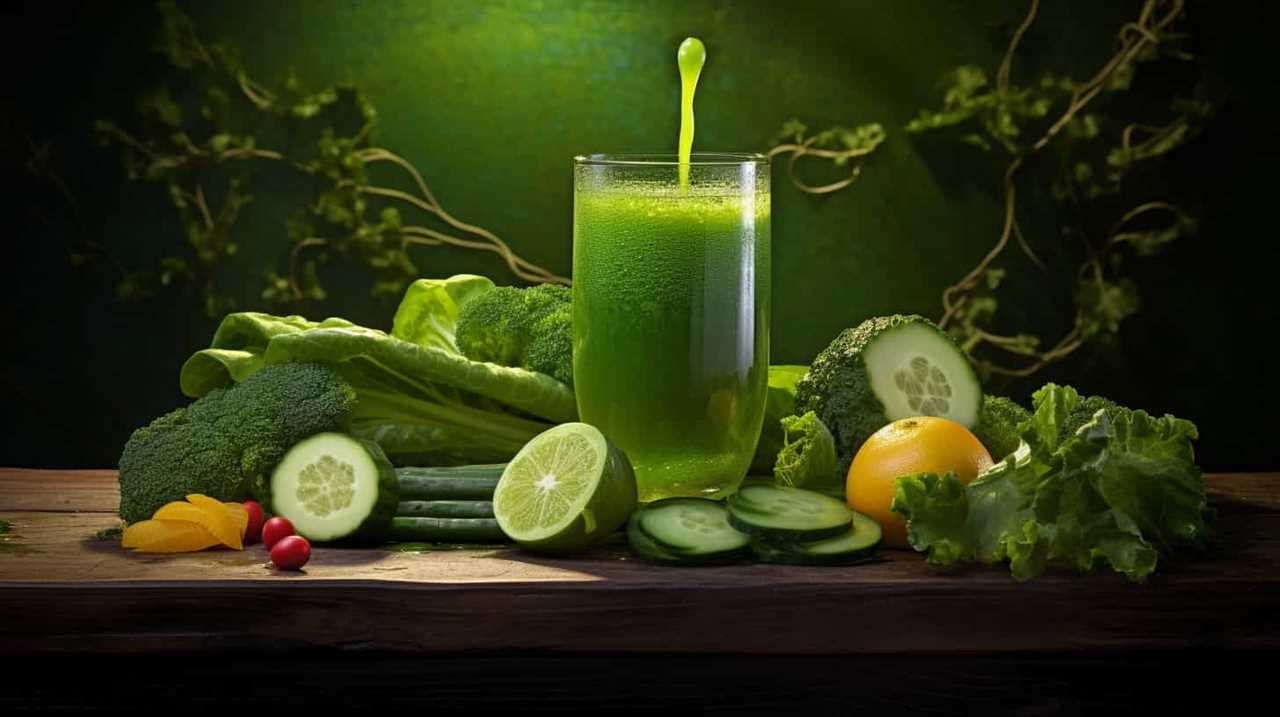
It’s important to start with the right pitcher. Look for a pitcher that’s made of glass or BPA-free plastic, as these materials won’t affect the taste of the lemonade. The pitcher should also have a lid or cover to keep the lemonade fresh and prevent spills.
Now, let’s talk about the lemons. While bottled lemon juice is convenient, using fresh lemons instead can elevate the flavor of your lemonade. Choose lemons that are firm and have a bright yellow color. Give them a gentle squeeze to ensure they’re juicy. To extract the juice, you’ll need a citrus juicer or a reamer. These tools make it easy to get every last drop of juice from the lemons.
Mixing the Lemonade Concentrate
To start mixing the lemonade concentrate, we’ll slowly pour the bottled lemon juice into the pitcher. It’s important to choose the right container for the lemonade concentrate. A pitcher with a lid or a tightly sealed container will help maintain the freshness and prevent any spills or leaks. Once the lemon juice is in the pitcher, we can move on to the next step of adding water and sweetener.
To ensure the lemonade concentrate stays fresh, it’s essential to store it properly. Keep the pitcher in the refrigerator to maintain its cool temperature and prevent any bacteria growth. If you have any leftover concentrate, transfer it to a smaller container with an airtight lid before refrigerating. This will help retain its flavor and prevent any contamination.

Now that we’ve mixed the lemonade concentrate, it’s time to adjust the sweetness and tartness to taste.
Adjusting the Sweetness and Tartness to Taste
We can adjust the sweetness and tartness of the lemonade to taste by adding more sugar or lemon juice, respectively. If you prefer a sweeter lemonade, simply add more sugar and stir until it dissolves completely. You can experiment with different sweeteners such as honey or agave syrup to find the perfect balance of sweetness.
On the other hand, if you want a tangier lemonade, add more lemon juice gradually, tasting as you go until it reaches your desired level of tartness.
Additionally, you can get creative with your lemonade by adding flavors like fresh mint leaves or a hint of lavender. These additions can elevate the flavor profile and create a more refreshing and unique experience.

Now that we’ve adjusted the sweetness and tartness of our lemonade, let’s move on to serving and enjoying your refreshing glass of lemonade.
Serving and Enjoying Your Refreshing Glass of Lemonade
Now let’s sit back, relax, and savor our refreshing glass of lemonade.
When it comes to serving and enjoying this delightful drink, there are a few techniques and garnishing options to consider.
Firstly, serving your lemonade chilled is essential for maximum enjoyment. Ensure that you have chilled glasses or add ice cubes to the glasses before pouring the lemonade.

To add a touch of elegance, you can garnish your lemonade with a slice of lemon on the rim of the glass. For an extra burst of flavor, you could also add a sprig of fresh mint or a few berries.
Remember to gently stir the lemonade before serving to evenly distribute the flavors.
Now, take a sip, feel the refreshing tang of lemon, and let the sweet and tart flavors dance on your taste buds.
Cheers!

Frequently Asked Questions
Can I Use Fresh Lemons Instead of Bottled Lemon Juice?
Fresh lemons offer numerous benefits over bottled lemon juice. The taste of fresh lemons is unparalleled, providing a vibrant and tangy flavor. Incorporating fresh lemons into your lemonade will elevate its taste and give it a refreshing and authentic twist.
Can I Substitute Sugar With a Different Sweetener?
Substituting sweeteners in lemonade can enhance the flavor and offer health benefits. We’re knowledgeable about alternative sweeteners and can provide precise, detailed instructions on using them in place of sugar.
How Long Does the Lemonade Concentrate Need to Chill in the Refrigerator?
The chilling time for the lemonade concentrate in the refrigerator is typically around 1-2 hours. Using bottled lemon juice offers the benefit of convenience and consistent flavor for a refreshing glass of lemonade.
Can I Add Other Fruits or Flavors to the Lemonade?
Sure, we can definitely add different fruits or flavors to our lemonade. It’s a great way to experiment with unique flavors and create refreshing, personalized drinks. The possibilities are endless!

How Long Does the Lemonade Stay Fresh in the Refrigerator?
Lemonade made with bottled lemon juice can stay fresh in the refrigerator for about 5-7 days. To maximize shelf life, store it in an airtight container and keep it chilled.
Conclusion
And so, with a few simple steps and the right ingredients, a glass of refreshing lemonade is born.
Like a symphony of flavors dancing on your taste buds, this tangy elixir quenches thirst and brings joy on a hot summer day.
Just a sip transports you to a world of citrusy delight, where the sweetness and tartness blend harmoniously.

So go ahead, indulge in the art of lemonade-making and savor every drop of this sun-kissed nectar.
Cheers to the perfect glass of lemonade!
Susannah expertise lies in researching and compiling evidence-based content on juicing, nutrition, and overall health. She is committed to ensuring that The Juicery World offers accurate, up-to-date, and trustworthy information to empower readers to take control of their health. Susannah’s goal is to inspire individuals to embrace juicing as a way to nourish their bodies and live their best lives.
Juice Tips and Tricks
How to Know if Orange Juice Is Bad

We’ve all been in that situation before – reaching for a glass of orange juice and hesitating, unsure if it’s still okay to drink. Fear not! This article will give you the knowledge you need to determine for sure if your orange juice is still fresh or if it’s gone bad.
With a blend of scientific precision and practical tips, we’ll explore color changes, strange smells, off taste, texture changes, and mold or growth that may indicate spoilage.
Let’s dive in and serve ourselves a refreshing glass of certainty!
Key Takeaways
- Color changes in orange juice can indicate a loss of freshness and shelf life extension, but it doesn’t necessarily mean the juice is bad.
- Unusual or off-putting odors in orange juice, such as sour or fermented scents, can be a sign of poor quality.
- An off taste in orange juice, such as sour, bitter, or fermented flavors, suggests that the juice is spoiled.
- Texture changes in orange juice, such as pulp separation or a thicker consistency, can occur as the juice ages, so it’s important to consume it before the expiration date.
Color Changes in Orange Juice
We should be aware that color changes can indicate whether orange juice is bad.

When it comes to orange juice, color is a crucial factor to consider. As oranges are exposed to air, an oxidation process occurs, which leads to changes in color. Fresh orange juice has a vibrant orange hue, indicating its freshness and high nutritional value.
However, as time passes, the juice may undergo a color change, turning dull or brownish. This change in color is a result of the oxidation process, which affects the flavor and quality of the juice. It’s important to note that while a change in color doesn’t necessarily mean the juice is bad, it does indicate that the juice is losing its freshness and shelf life extension.
Therefore, it’s advisable to consume orange juice when it’s at its freshest, as indicated by its vibrant orange color.
Strange Smells in Orange Juice
When it comes to evaluating orange juice, we should be cautious of any strange smells or odors. A fresh, pleasant smell is indicative of good quality orange juice. However, if you notice any unusual or off-putting odors, it may be a sign that the juice has gone bad. These smells can range from a sour or fermented scent to a rancid or moldy aroma.

It’s important to note that while some natural variations in scent can occur due to the specific variety of oranges used, any strong or unpleasant smells should raise concerns. If you have citrus fruit allergies, it’s especially important to pay attention to the smell of orange juice, as it could indicate the presence of spoilage or contamination.
Ensuring the quality of orange juice is essential as it’s a popular beverage known for its health benefits, including being rich in vitamin C and antioxidants.
Off Taste of Orange Juice
Our taste buds can detect even the slightest hint of an off taste in orange juice, which can indicate that it has gone bad. The taste of orange juice should be fresh, tangy, and slightly sweet. If it tastes sour, bitter, or fermented, it’s likely spoiled.
One common cause of an off taste in orange juice is the use of overripe oranges. When oranges become overripe, their flavor profile changes, resulting in a less pleasant taste. Another factor to consider is the expiration date. Orange juice that has passed its expiration date is more likely to develop an off taste. It’s important to check the expiration date before consuming orange juice to ensure its freshness and quality. Additionally, improper storage conditions, such as leaving the juice at room temperature for extended periods, can lead to the development of unpleasant flavors. Storing orange juice in the refrigerator helps maintain its freshness for longer. For those exploring different juice options, aloe vera juice flavor tips suggest pairing tart juices with milder flavors to balance the overall taste.
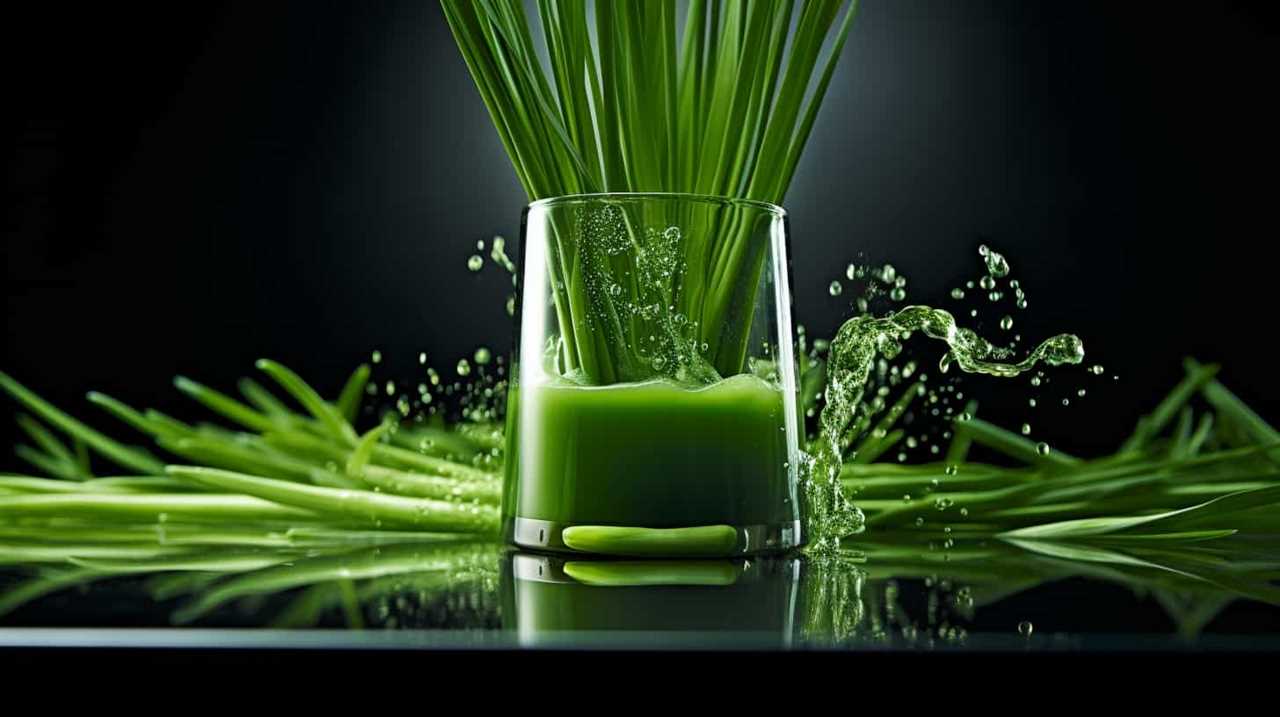
Now, let’s move on to discuss the texture changes in orange juice.
Texture Changes in Orange Juice
As we explore the texture changes in orange juice, it’s important to note that certain factors can cause it to become thicker or develop sediment. One common texture change in orange juice is pulp separation, where the pulp separates from the liquid and settles at the bottom. This can occur naturally over time, as the pulp particles become denser and sink.
Another factor that can affect the texture of orange juice is the expiration date. As orange juice ages, it may start to develop a thicker consistency and even form sediment. This is a result of the natural breakdown of the juice’s components. Therefore, it’s crucial to check the expiration date on orange juice and consume it before it reaches its expiration date to avoid any undesirable texture changes.
Mold or Growth in Orange Juice
We need to be aware of the possibility of mold or other growth occurring in orange juice. Mold can develop in orange juice if it isn’t stored properly or if it has passed its expiration date.

To prevent mold growth, it’s important to follow these steps:
- Store orange juice in the refrigerator at a temperature below 40°F (4°C).
- Check the expiration date on the bottle before consuming. Discard any orange juice that has expired.
- Keep the container tightly sealed to prevent air and moisture from entering, as these can promote mold growth.
Regularly inspecting orange juice for any signs of mold or unusual growth is essential. If you notice any discoloration, a strange odor, or visible mold, it’s best to discard the juice to avoid any potential health risks.
Frequently Asked Questions
Can Orange Juice Go Bad if It’s Stored in the Freezer for Too Long?
Frozen orange juice can potentially lose its nutrients and change its taste if stored in the freezer for too long. It is important to check for signs of spoilage before consuming it.
How Long Can Orange Juice Stay Fresh in the Refrigerator Once It’s Opened?
Once opened, orange juice can stay fresh in the refrigerator for about 7-10 days. To maintain its freshness, store it properly by keeping it tightly sealed and at a consistently cold temperature. If the orange juice develops an off odor, flavor, or appearance, it’s best to discard it to avoid any potential health risks. Factors like exposure to air and varying temperatures can influence how long orange juice lasts, so it’s crucial to handle it with care. Always check the expiration date as a general guide, but remember that proper storage can extend its freshness slightly. Additionally, avoid leaving the orange juice out at room temperature for extended periods, as this can significantly shorten how long orange juice lasts. Freezing the juice can be another option to extend its shelf life, but be aware that this may alter its texture and taste once thawed. By following these precautions, you can ensure your orange juice stays fresh and safe to consume.
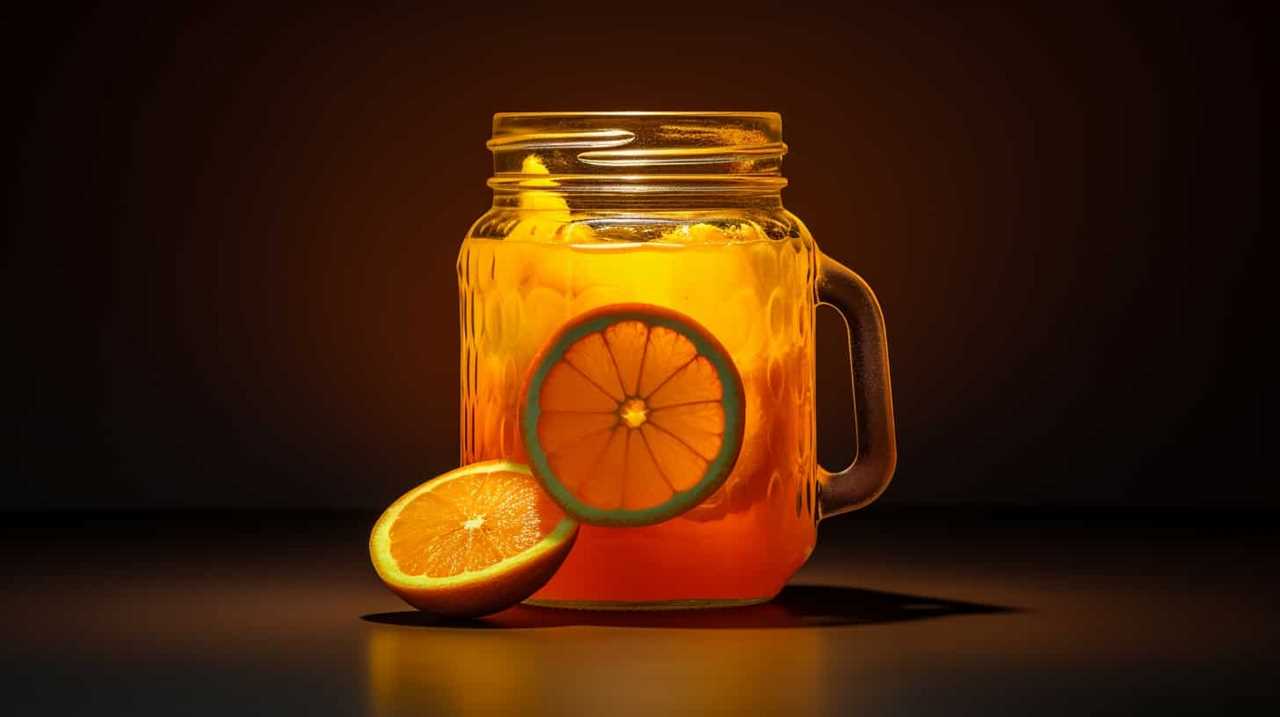
Is It Safe to Consume Orange Juice That Has Been Left Out at Room Temperature Overnight?
Left out orange juice may not be safe to drink as it can harbor harmful bacteria. Signs of spoiled orange juice include a sour smell, mold growth, and a change in color or taste.
Can Orange Juice Develop Harmful Bacteria if It’s Past Its Expiration Date but Still Looks and Smells Fine?
Orange juice can cause food poisoning if it develops harmful bacteria, even if it looks and smells fine. Signs of spoiled orange juice include a sour smell, mold growth, and a change in color or taste.
Does the Nutritional Value of Orange Juice Decrease as It Starts to Go Bad?
As orange juice goes bad, its nutritional value decreases. The longer it sits on the shelf, the more nutrients it loses. Signs of spoilage include a sour smell, off taste, and mold growth.
Conclusion
In conclusion, determining if orange juice is bad requires careful observation of color changes, strange smells, off taste, and texture changes. Just like a detective investigating a case, we must rely on our senses to detect any signs of spoilage.
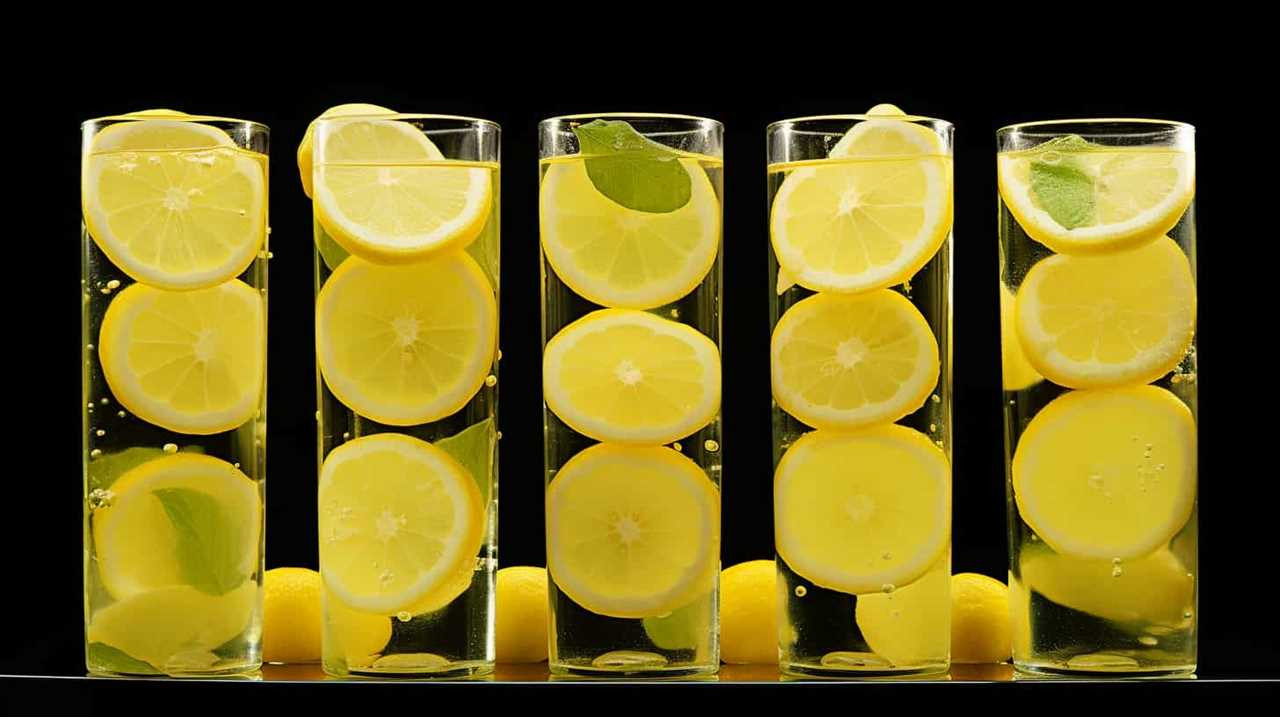
If we detect mold or growth in the orange juice, it’s a clear indication that it’s no longer safe to consume. By remaining vigilant and attuned to these indicators, we can ensure that our orange juice is always fresh and enjoyable.
Susannah expertise lies in researching and compiling evidence-based content on juicing, nutrition, and overall health. She is committed to ensuring that The Juicery World offers accurate, up-to-date, and trustworthy information to empower readers to take control of their health. Susannah’s goal is to inspire individuals to embrace juicing as a way to nourish their bodies and live their best lives.
-

 Vetted2 months ago
Vetted2 months ago15 Best Juices for Diabetics: Refreshing Options That Won’t Spike Your Blood Sugar
-

 Vetted2 months ago
Vetted2 months ago15 Best Decaf Coffee Options for Flavor Lovers Who Need a Caffeine Break
-

 Vetted2 months ago
Vetted2 months ago15 Best Espresso Ground Coffees to Elevate Your Morning Brew
-

 Vetted2 months ago
Vetted2 months ago15 Best K-Cup Coffee Pods for a Perfect Brew Every Time
-

 Vetted2 months ago
Vetted2 months ago15 Best Beans for Espresso: A Guide to Perfecting Your Brew
-

 Vetted2 months ago
Vetted2 months ago15 Best Kona Coffees to Savor the Rich Flavors of Hawaii
-

 Vetted2 months ago
Vetted2 months ago15 Best Cold Brew Coffees to Keep You Refreshed All Summer Long
-

 Vetted2 months ago
Vetted2 months ago15 Best Inexpensive Espresso Machines That Brew Quality Coffee on a Budget








